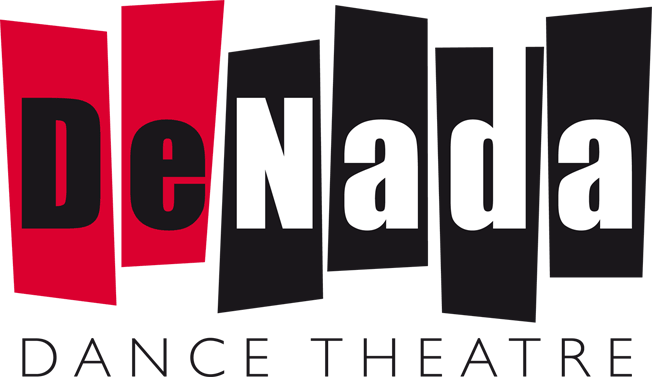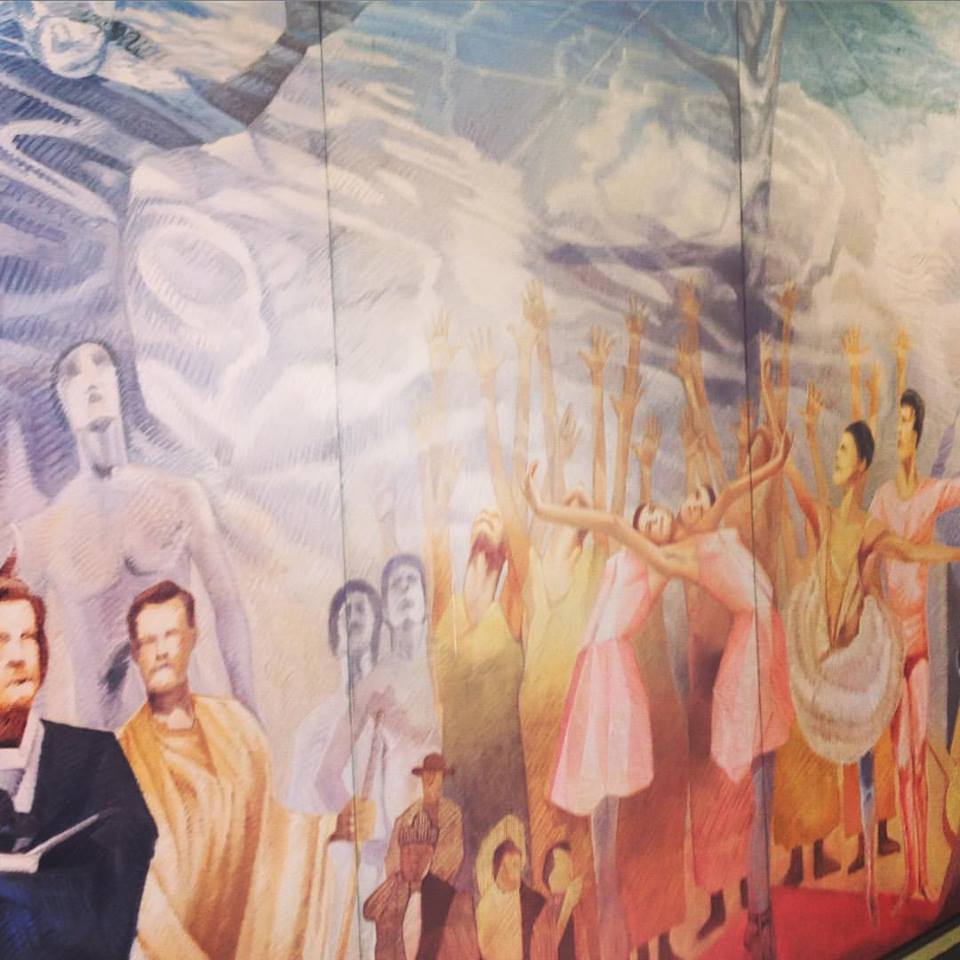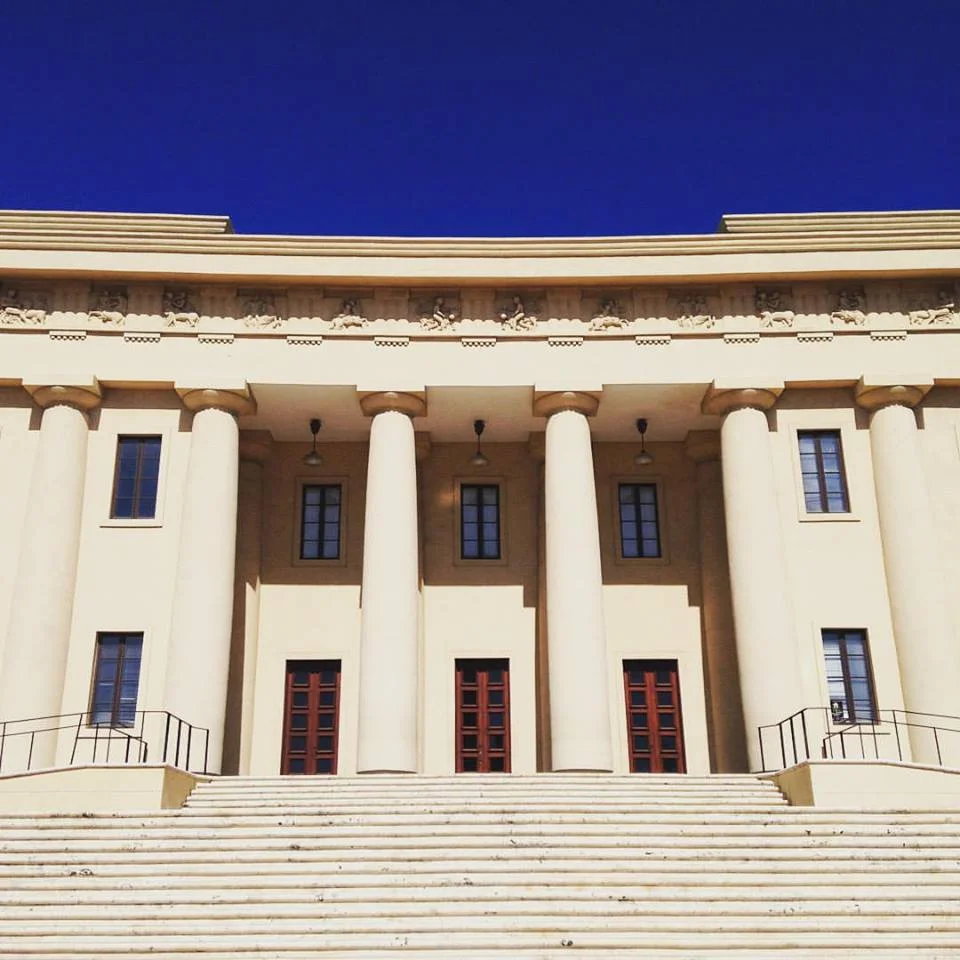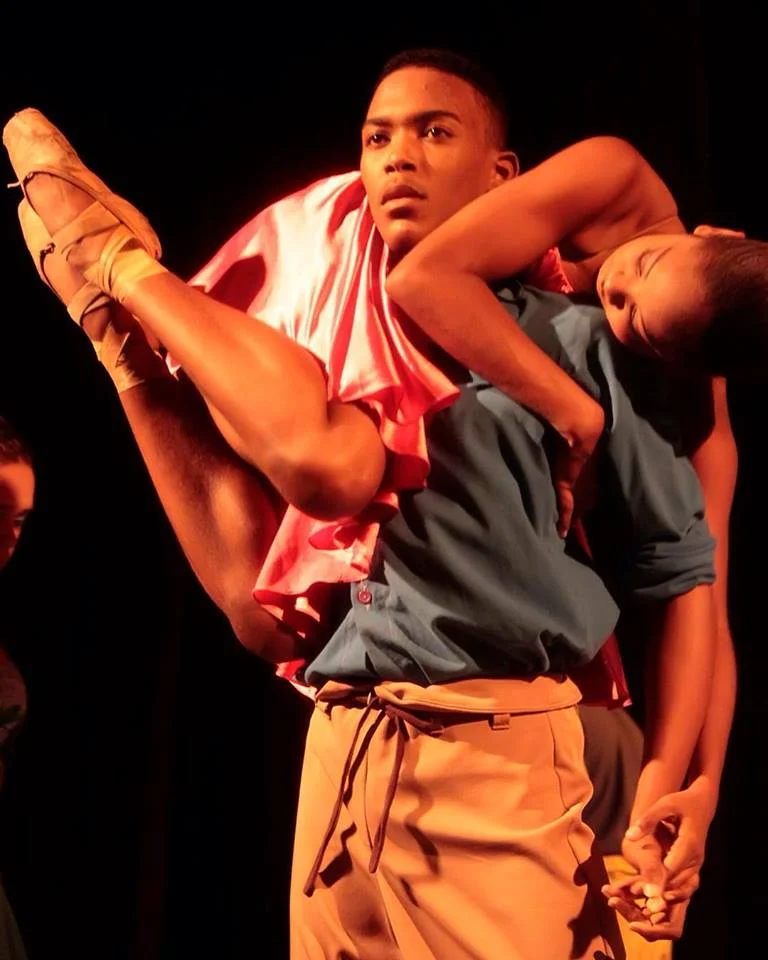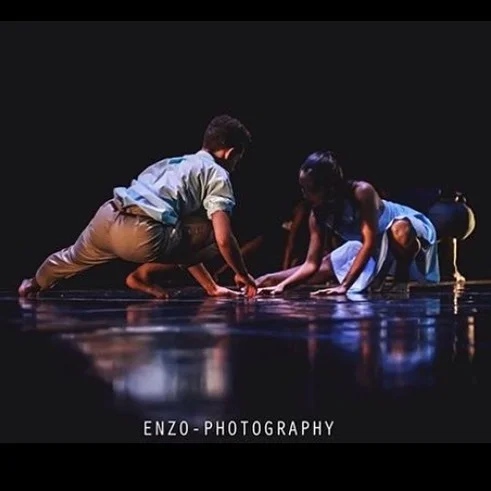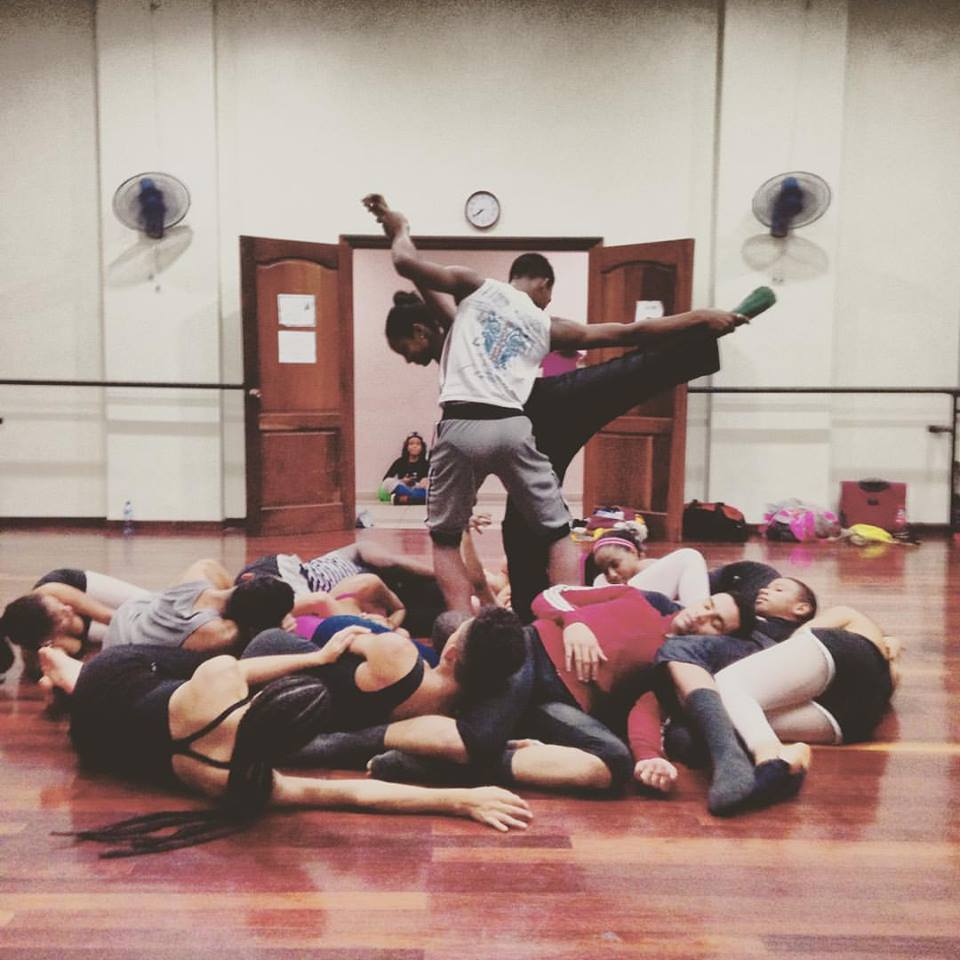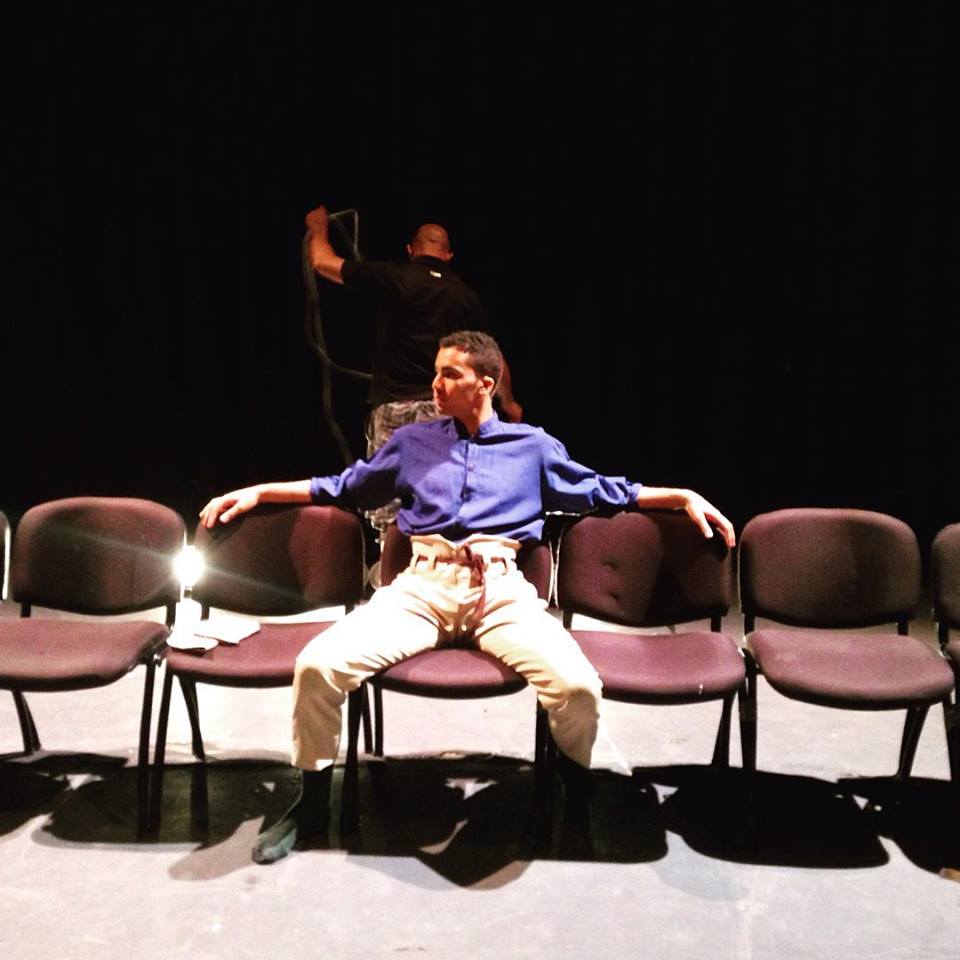Dominican Adventures
The National Dance School, Santo Domingo
I arrived in Santo Domingo on January 3rd, 2016, full of excitement and melodrama after watching nine hours of Spanish films on the Iberia flight. This had been my choice- I was travelling to the Caribbean to choreograph and research the Hispanic/Caribbean character, of which I have plenty, but thought some extra preparation would not hurt.
(Right to left)- Stephanie Bauger, choreographer Dayme del Toro, and visual artist Nathalie Ramirez
Carlos Pons Guerra with students of the National Dance School, Dominican Republic
Stephanie Bauger, my host, met me at the airport. I first met Stephanie last year in Havana, at the International Ballet Festival, when we were both waiting for a bus to the theatre at the Hotel Presidente. Stephanie, who now directs ENDanza, the company I would be working with in Santo Domingo, is an exquisite, long-limbed and beautifully lined Dominican dancer who trained at the School of the National Ballet of Cuba, and later danced with Julio Bocca’s Ballet Argentino and the National Dominican Ballet, where she was also rehearsal director. A year ago, she had very kindly guided me around the streets and theatres of Havana, where we shared a mojito or two, and after her invitation to come and work in Santo Domingo, I was very happy to be meeting her energetic, motivated and inspiring self again.
ENDanza in rehearsal for Miranda
Shoving the jetlag, melodrama and luggage into the boot of her car, we burst into the roads of Santo Domingo, where traffic follows very unique laws (scarily, unique to the individual driver), and arrived at a local shopping mall, where ENDanza was performing its last night of Nutcracker. To think of a Nutcracker under the stifling tropical heat may seem incongruous in the UK, but this public production, with free entry and extremely well attended, was quaint and nicely danced, and a fantastic initiative for taking ballet to the wider public.
ENDanza in Carlos Pons Guerra's Miranda
Rehearsals started early the next day at the National Dance School, a beautiful building with several studios with wooden floors and, thankfully, plenty of fans to ward off the heat and mosquitoes (who, I was to find out, have a particular weakness for Spanish blood). The dancers of ENDanza, the graduate company, are a young, energetic and a dance-hungry group, who learn choreography quickly and are also fast to add their own dizzying hip movements and abdominal undulations, if allowed. It wasn’t hard to take to these dancers, who can be loud and very affectionate, and they were generous and trusting throughout the process, which was very different to what they had experienced in the past. I was fascinated by the dancers- their rhythm and musicality really is impressive, and their outbursts of energy (particularly whenever a virtuosity step was involved) were refreshing and driving.
Carlos Pons Guerra and the National Dance Company of the Dominican Republic
The National Dance School, where I taught and worked for some time, does an incredible job at offering a dance education to young people of all backgrounds. It is accessible, staffed by experienced artists but more importantly, it offers students with fewer resources a free education, covering their travel expenses and offering them free uniforms, pointe shoes, etc. They perform a hugely important social labour for many young dancers, who have found motivation and a desire to progress in life through dance. This made it a really heartwarming environment in which to work.
Coinciding with the Shakespeare 400 celebrations, I decided to use Shakespeare’s Tempest as a starting point to explore ideas of gender, coming of age, colonialism and repression with the dancers, and it was also an interesting way for me to share British culture with them. I thought using Shakespeare as a point of departure would be a good start, as I could initially offer the dancers some of my background, and let their cultural experiences influence my research, which in turn shaped my reading of Shakespeare from a cultural, gender and sexual perspective.
A Sunday off at Juan Dolio beach
Working with the National Dance Company of the DR- the national contemporary company- was a fun experience. The dancers are all very individual, with interesting characters and energies, and it was fascinating to work with dancers from such varied backgrounds.
The work I created, Miranda, was premiered in a mixed programmed for ENDanza, under the title of La Tempestad, with works by Annabelle Lopez Ochoa, Stephanie Bauger/Dayme del Toro/Marcos Rodriguez, and a classical selection. This meant that I was able to watch the rehearsal and restaging of Annabelle Lopez’s work, a choreographer I hugely admire. It was very inspirational to watch other local choreographers at work and discuss their processes, comparing them to European ways of working.
The Palacio de Bellas Artes in Santo Domingo, where Miranda was premiered
I met some amazing artists and friends- the beautiful singer and visual artist Nathalie Ramirez, who shares my addiction to vaudeville and kitsch, and Juanjo Cid, film director, who spoke to me about Noches de Penthouse, the very touching documentary he is working on about Santo Domingo’s first underground drag bar, where in the 80’s, a sorority of drag queens would create amazing spectacles featuring numerous Evitas; several La Lupe impersonators, acts involving live chicks coming out skirts, and even a re-enactment of Caligula. This last one, of course, I would have loved to see.
With my Dominican family- members of ENDanza's ballet staff, and fellow choreographers, at my good-bye dinner.
Because I love a bit of drama, one of my favourite memories is the drive towards Las Terrenas, where I played Khachaturian’s adagio from Spartacus, full blast in the car, driving through breathtaking, red soiled hills and silver-treed jungle. The Dominican Republic boasts stunning landscapes, not just the glorious and serene beaches we immediately think of (and which I visited on days off), but also rivers, forests and plains. Altos de Chavón, where the company performed while I was there, is a beautiful village built in imitation of Mediterranean villages. Green balls of fire would cross my window every morning and evening as the cotorra birds gathered at their tree clubhouse (quite a concert at 6 am!)
I was very well received by my host, dancers, other artists I met in the DR and their relatives. They guided me around several of the provinces and took me to iconic locations and events- such as the weekly bachata and merengue gathering in the ruins of Saint Francis, Santo Domingo, where family members of all ages gather every Sunday to dance, with a live band, from 19:00-23:00, and is an impressive display of community and family spirit we hardly see in the UK, as well as a clear example of how dance is an integral part of their lives. The time spent with them allowed me to see a generous, respectful, passionate and warm people, a view of the Caribbean character I wish could be more widely shared in the UK.
My four weeks in the Dominican Republic were an amazing experience, and I am extremely thankful to the British Council, Arts Council England, Stephanie Bauger and the Dominican companies for making such an exchange possible.
